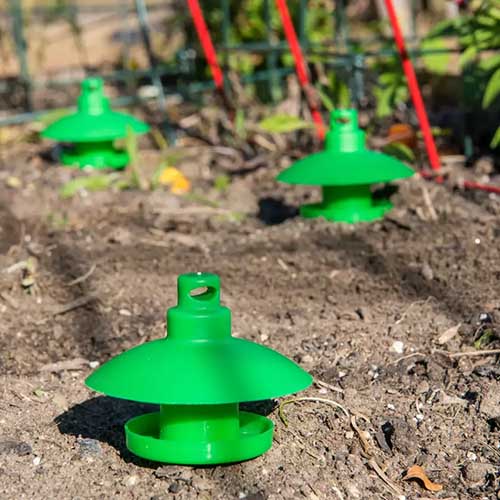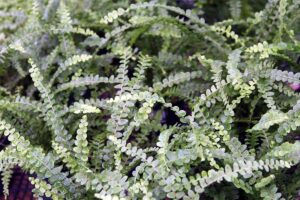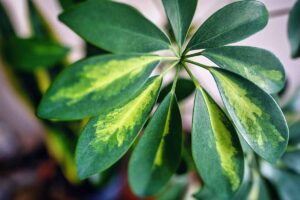You’d think that pitcher plants and other carnivorous flora wouldn’t have to deal with many pests, since they’d probably just eat them.
But in spite of all their animal-munching, pitcher plants can be munched upon by animals, too.
Even when they’re not straight-up consuming a pitcher plant and damaging its structure, pests can cause a plethora of other problems.
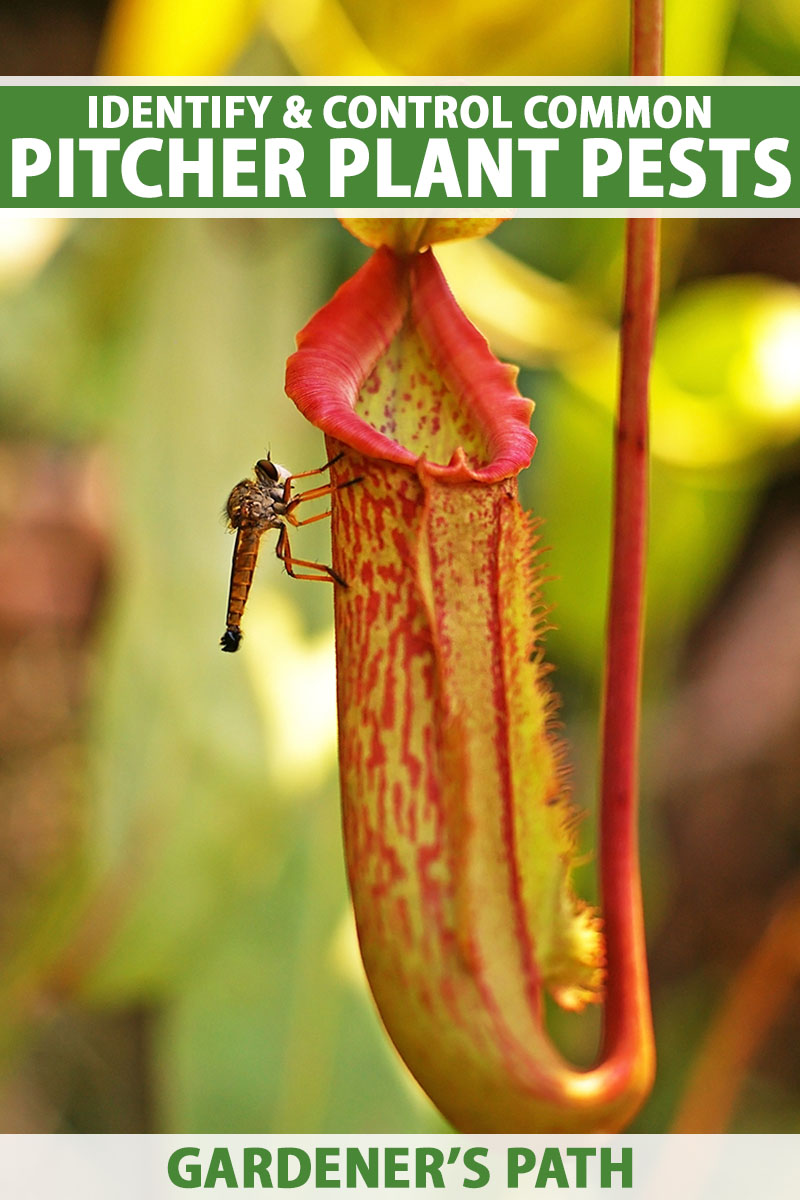
We link to vendors to help you find relevant products. If you buy from one of our links, we may earn a commission.
They can transmit disease, cause structural deformation, and even leave nasty little excretions in their wake. None of which a gardener should have to deal with.
But “deal with it” a gardener must, unfortunately. So how? And how can – if you’ll pardon the alliteration – pitcher plant parents prevent pest problems, pronto?
In this guide we’ll cover 11 types of pests that can harm a pitcher plant, along with how to identify and manage each one.
Here’s the lineup:
11 Common Pitcher Plant Pests
For those new to pest management, just know that properly cultivating flora according to their needs, whether they’re indoors or out in the garden, makes them much less likely to suffer from pest problems, and oftentimes prevents infestations entirely.
If you need a refresher on pitcher plants and their cultivation before we begin, our guide has got you covered.
Actually, there’s one more thing we should probably hash out before diving in: Nepenthes and Sarracenia are unique organisms, and also require unique pest management practices.
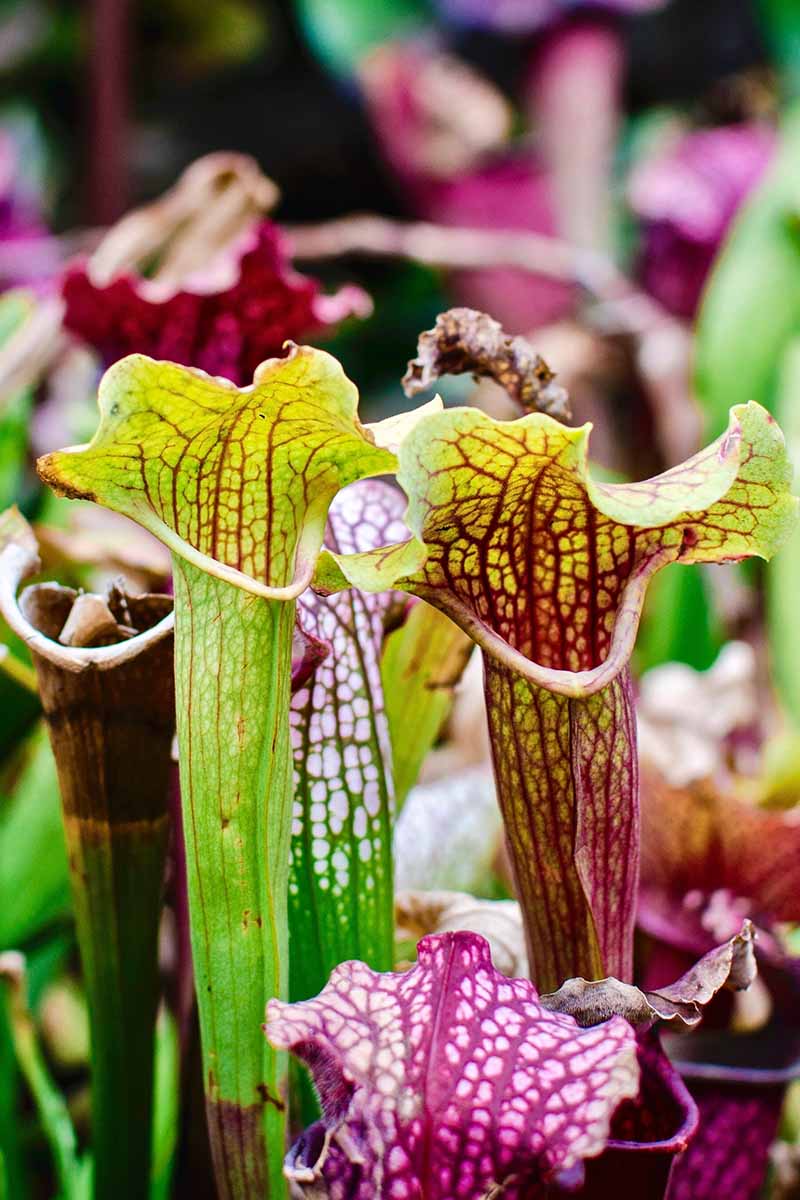
They’re very delicate, and thus sensitive to your standard pest controls such as horticultural oil and insecticidal soap. Even organic, botanically-derived insectides like pyrethrum can be harmful to pitcher plants.
So it’s best to remove any pests by hand, with alcohol-dipped cotton swabs, or by placing traps nearby.
For outdoor specimens, the normal recommendation of introducing beneficial pest-consuming insects isn’t always a good idea, since pitcher plants may just consume them, ironically enough.
1. Aphids
With 5000 or so aphid species worldwide – and about 1,350 of them residing in North America – the Aphididae family is vast and widely distributed. And unfortunately, aphids are a notorious nuisance among green thumbs.
Aphids can be recognized by their small, soft, pear-shaped, and often translucent bodies. They are generally green, but may also come in shades of black, brown, light red, yellow, or white. Some are winged, others are wingless, and some are even coated in wax!
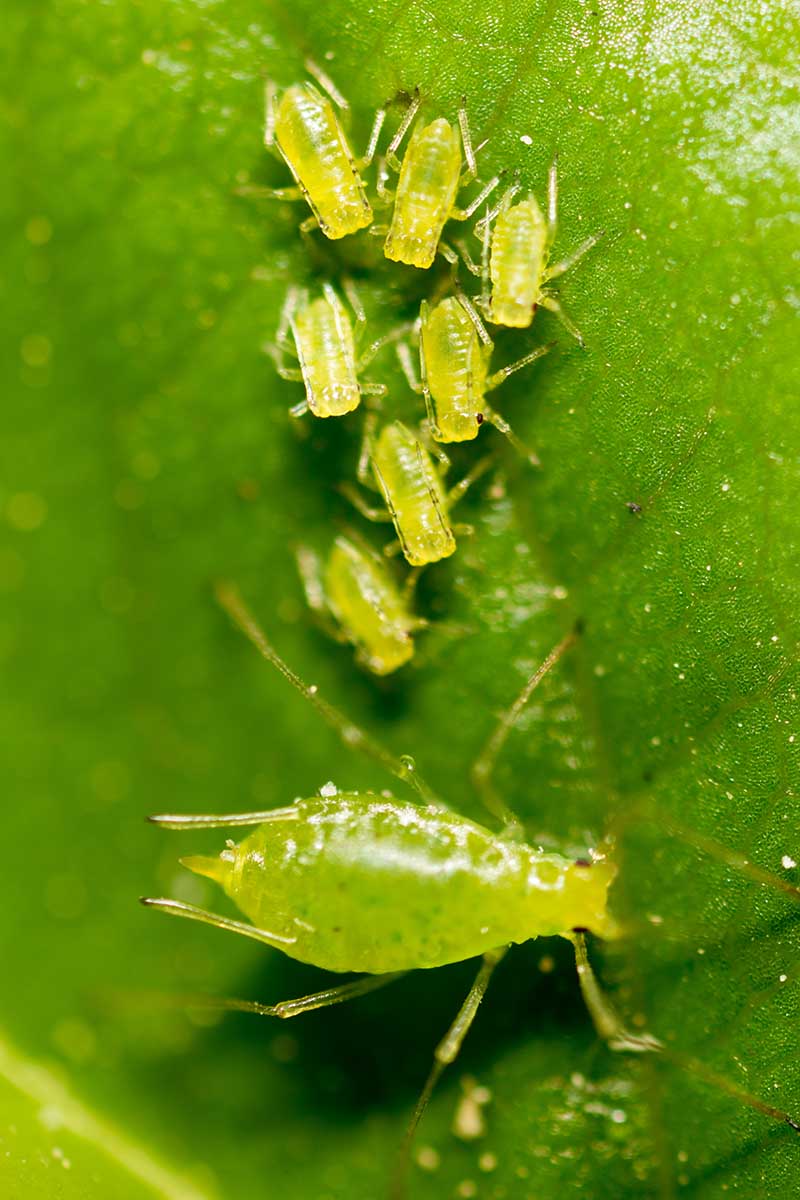
Off the rear of their abdomens protrude a pair of cylindrical cornicles, which can discharge a quick-drying, defensive fluid against predators. When predators are caught in the fluid, it hardens into cornicle wax, effectively immobilizing them.
Overwintering in eggs that hatch in spring, young wingless females immediately give birth to live offspring for three to four weeks or so, each yielding 60 to 100 live nymphs.
The smaller nymphs can give birth in a week’s time, which can all add up to a lot of aphids. Eventually, winged females are produced, fly elsewhere, and produce males and females that mate and lay eggs, continuing the cycle.
Using piercing-sucking mouthparts, aphids extract sap from the phloem of your pitcher plants, which can result in chlorotic leaves, wilting, and a reduced growth rate. They also excrete honeydew as they feed, which can attract ants and lead to sooty mold formation.
Removal and squishing by hand or via tweezers is the best course of action. Or, treat them like a stovetop stain and gently wipe them down with a moist cloth.
More aphid control tips can be found here.
2. Black Vine Weevils
A member of the Curculionidae family of true beetles and a devastating pest of both woody and herbaceous plants, Otiorhynchus sulcatus is harmful to pitcher plants in both its adult and larval forms.
Adult black vine weevils are three-eighths to half an inch in length, covered in a hard, black, shiny exoskeleton.
They primarily feed on foliage at night, leaving long, rounded notches along the leaf margins. A telltale sign of their presence, these symptoms can hinder photosynthesis.

The larvae are legless and C-shaped, with whitish bodies and reddish-brown heads.
They feed on roots and lower stems, which disrupts the xylem and phloem that carry water and nutrients throughout the plant.
Emerging from the soil in late spring, the adults lay hundreds of eggs by the base of plants over a one- to two-week period.
Out of the eggs hatch the larvae, which feed from midsummer all the way into spring until they transform into adult weevils.
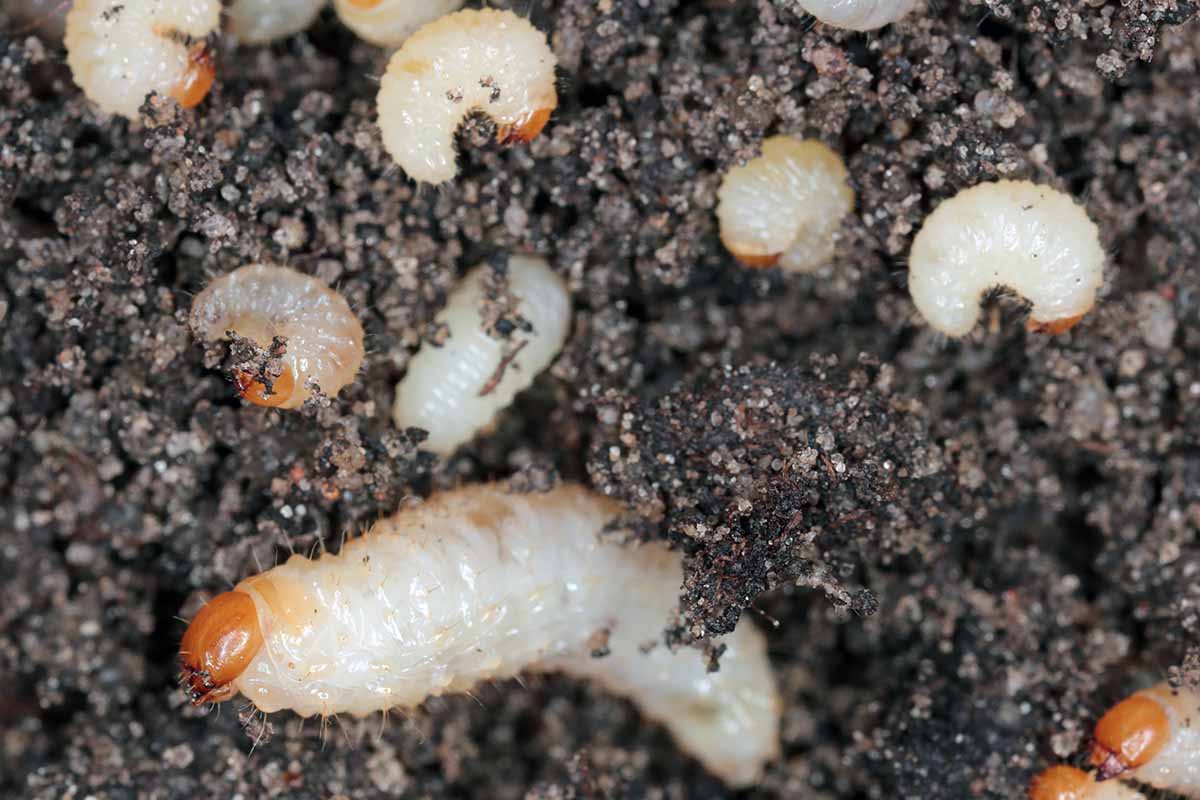
Adults can be controlled by hand-picking them off your plants. If your pitcher plants are growing outdoors, this’ll need to be done at night. Either way, the collected weevils should be promptly destroyed.
To control the soilborne larvae, beneficial nematode species from the Heterorhabditis or Steinernema genera can be used to drench the soil near infested roots during the larval feeding period.
For a triple-threat combo of H. bacteriaphora, S. carpocapsae, and S. feltiae nematodes, check out Arbico Organics.
Other weevils got you worried? Check out our root weevil guide.
3. Caterpillars
The larval form of moths and butterflies from the Lepidoptera order, caterpillars are the intermediate step before the metamorphosis into beautifully-winged bugs.
Unfortunately for gardeners, their existence can cause damage to many garden specimens.
Chances are, you can recognize caterpillars already: long, soft, cylindrical, segmented bodies, with many pairs of stubby little legs.
They come in a variety of colors and patterns, from bright and striking to boring and bland. Some are hairy, have gnarly antennae, others are cute, and some are nightmare fuel.
Ravenously feeding on leaf tissues, caterpillars need all the energy they can consume prior to their transformation.
This feeding leaves the pitchers and foliage with ragged chewing holes, while leaf loss can occur with severe feeding. Adding insult to injury, a caterpillar infestation can result in rolled and webbed-up foliage, not to mention fecal deposits of frass on adjacent tissues.
Control of caterpillars is pretty simple: routinely check your pitcher plants for their presence and pick them off by hand.
Once they’re plucked, they can be dropped into a bucket of soapy water, or crushed in a Mortal Kombat-style finishing move. Prune away any damaged or warped leaves and pitchers, and you’re golden.
4. Leafhoppers
The Cicadellidae family of leafhoppers definitely live up to their common name by hopping from leaf to leaf, feeding and vectoring disease as they go.
Usually measuring less than a quarter of an inch in length, these wedge-shaped insects have spiny hind legs and are generally brown, gray, green, yellow, or mottled hues. They tend to walk sideways rather than forwards, and are quick to jump when startled.
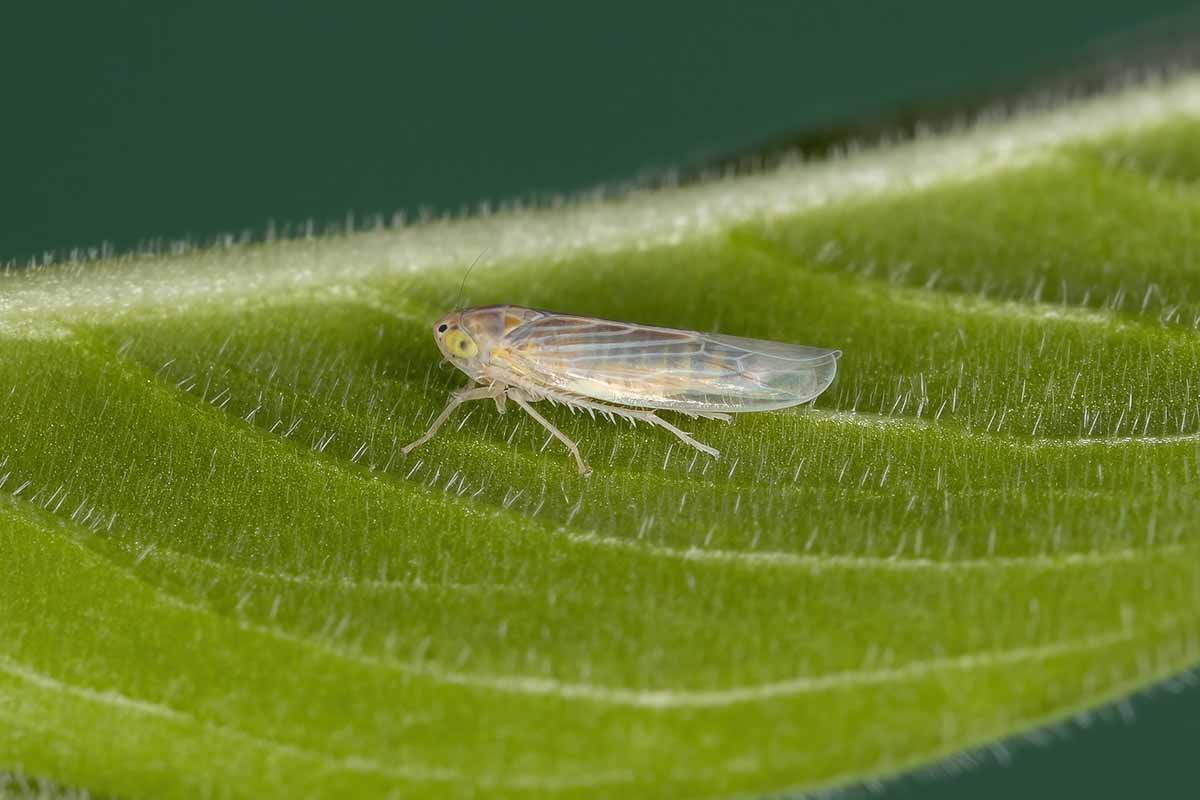
Starting off in eggs that hatch in late winter or spring, the nymphs usually go through five instars of maturation, no pupal stage necessary.
After feeding, the adults lay their eggs into the leaf tissue itself, leaving pimple-esque wounds. Cue “The Circle of Life” from Disney’s “The Lion King.”
Leaving flecked bits of feeding damage on leaves, leafhoppers can cause foliage to become chlorotic, dried-out, and curled. They can also excrete honeydew, aphid-style.

Most of the time, leafhoppers don’t require much control. But yellow sticky traps like the ones offered by Gideal via Amazon are a great way to monitor for and trap them.
5. Mealybugs
A member of the Pseudococcidae family, mealybugs are soft-bodied, segmented insects with long, prominent filaments protruding out the rear of their bodies.
These pests are coated in a light-colored, fuffy, and “mealy” wax that has become their trademark.
Females lay hundreds of eggs into sacs nestled in the crooks of stems and leaves. A week or so later, young nymphs emerge from their eggs, usually maturing into adulthood in six to eight weeks.
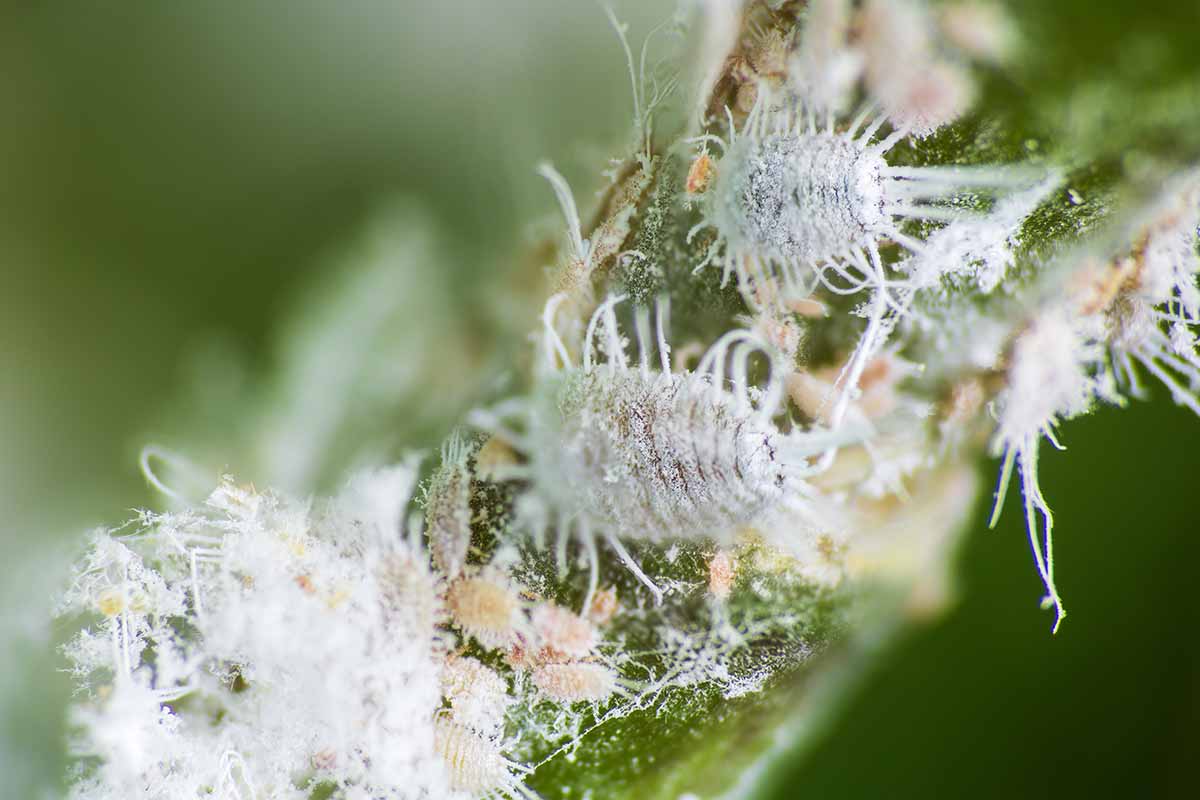
Using their piercing-sucking mouthparts, mealybugs extract the sap from tender foliage and pitchers, which can lead to chlorosis, stunted growth, warping, wilting, and even death.
Check your specimens for mealybugs when you acquire them and especially before planting them in the ground or a different container.
If you notice an infestation, quarantine your affected specimens before using an alcohol-dipped cotton swab to wipe them off. Pruning away severely-infested plant tissue is also helpful.
Alcohol-wise, you’ll need something more specialized and less culinary than your average brewski.
Go with 70 percent isopropyl rubbing alcohol, sold by Dealmed in 16-ounce containers via Amazon.
For further insight on mealybug management, give our guide a read.
6. Scale
The Coccoidea superfamily contains around 8,000 species of scale – talk about large-scale.
Varying in size from a sixteenth of an inch to three-eighths of an inch wide, they generally have rounded, flattened, and immobile bodies that are either soft or armored.
The life cycle varies among species – some spawn their young asexually, others mate in the typical male-female fashion, and some even reproduce as hermaphrodites.
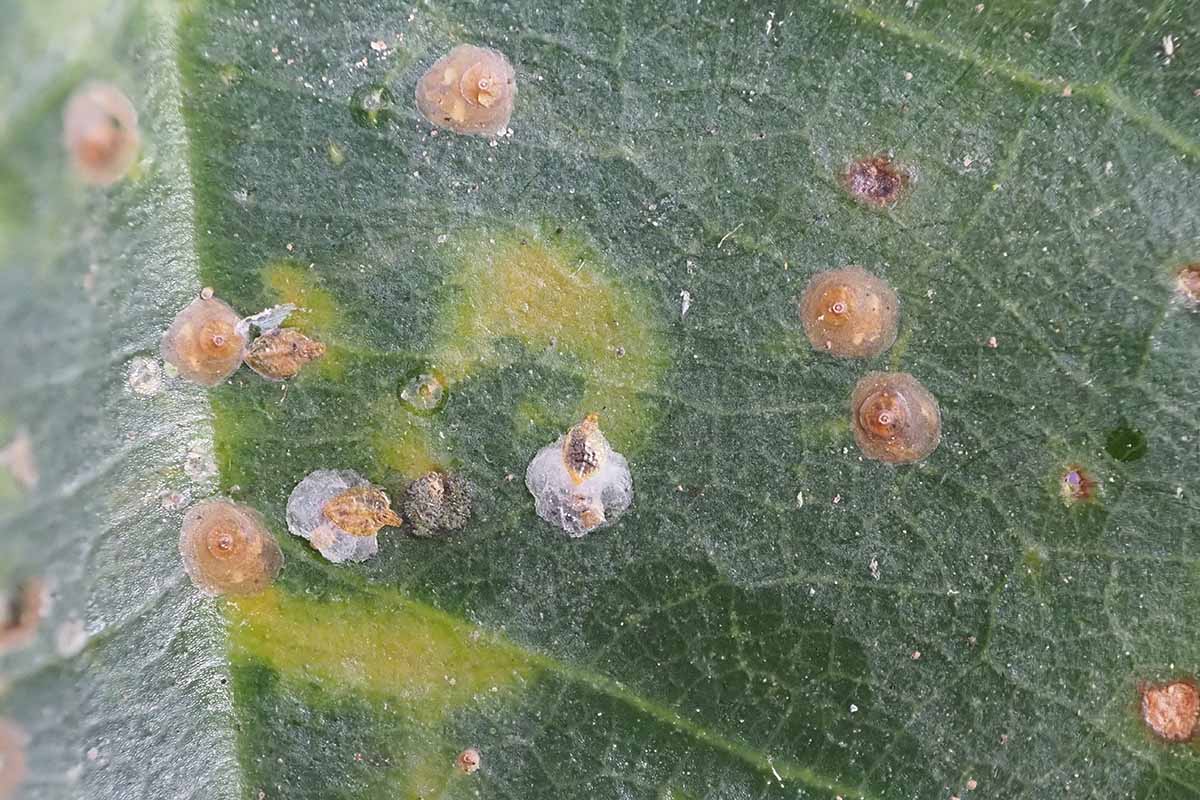
Congregating in large, conspicuous masses on leaves, stems, and the pitchers themselves, scale use piercing-sucking mouthparts to extract sap from phloem, excreting honeydew as they feed.
This feeding can result in chlorosis, distortion, and defoliation, depending on severity.
Scale control is similar to mealybug control. For manual removal, your best bet is to scrape them off with something fine and pointed, like a toothpick or a small bristly brush.
We have tips on scale insect control for you right here.
7. Slugs and Snails
Members of the Mollusca phylum, slugs and snails are pretty similar, save for the latter’s shell.
They both move via a muscular “foot” that secretes a slippery mucus, they’re both hermaphroditic egg-layers, and they tend to be the most active at night and/or in overcast conditions.
Slugs and snails differ a bit with their life cycles, though. Snails lay around 80 eggs up in one go, and take two years to reach adulthood after hatching.
Slugs, however, lay three to 40 eggs at a time, and take a mere three to six months to reach adulthood.

Using their rough-textured tongues, slugs and snails essentially file down plant tissue as they feed, leaving smooth, yet irregularly-shaped holes in the foliage and pitchers.
If the damage is hard to discern, confirm it by checking for nearby slime trails.
Since slugs and snails like taking shelter in shady spots, eliminate all unnecessary sources of shade near your outdoor specimens, such as nearby weeds or detritus.
If you feel like it, go out after dark with a flashlight to pluck them from your pitcher plants, toss them in a plastic bag, then dispose of them.
Beer-baited traps like these green plastic ones from Gardener’s Supply Company will make this nasty slug- and snail-catching business a much more passive affair.
Slugs and snails got you down? Wrangle them with the help of our guide.
8. Spider Mites
Just like actual spiders, spider mites aren’t insects – they’re technically arachnids. But in spite of that, they’ll definitely bug you.
At first glance, you might notice a mass of tiny moving dots, if you even see them at all.
Bust out a hand lens for a closer look, and you’ll spot tiny, eight-legged critters with oval-shaped bodies and twin red eyespots close to their heads.
Females emerge from their overwintering shelter in warm spring weather to lay eggs. Once the weather heats up even more, reproduction spikes until the cool weather of late summer.
With enough heat and adequate food, a new generation of spider mites can be produced in less than a week at peak reproduction!
Typically congregating on the undersides of leaves, mites use syringe-like mouthparts to draw sap out of plant tissues.
Early feeding shows up as stippled dots, which can eventually cause chlorosis and even leaf drop. All the while, silky webbing is visible on infested plants like a tiny Spider-Man had just swung by.
Intentional monitoring is very important with spider mites, as they’re pretty tough to spot. If you see them, frequent wipe-downs with a wet cloth is the best way to de-infest your pitcher plants.
Learn more about spider mites here.
9. Thrips
Part of the order Thysanoptera, thrips are slender insects with fringed wings that measure less than a twentieth of an inch in length.
Varying in translucent color, thrips come in hues such as white, yellow, reddish-orange, brown, or black.
After being laid on or in leaves, egg-bound thrips emerge as wingless larvae and go through two feeding stages, two non-feeding stages, and finally adulthood. With a life cycle that can be as brief as two weeks, up to eight generations can take place per year!
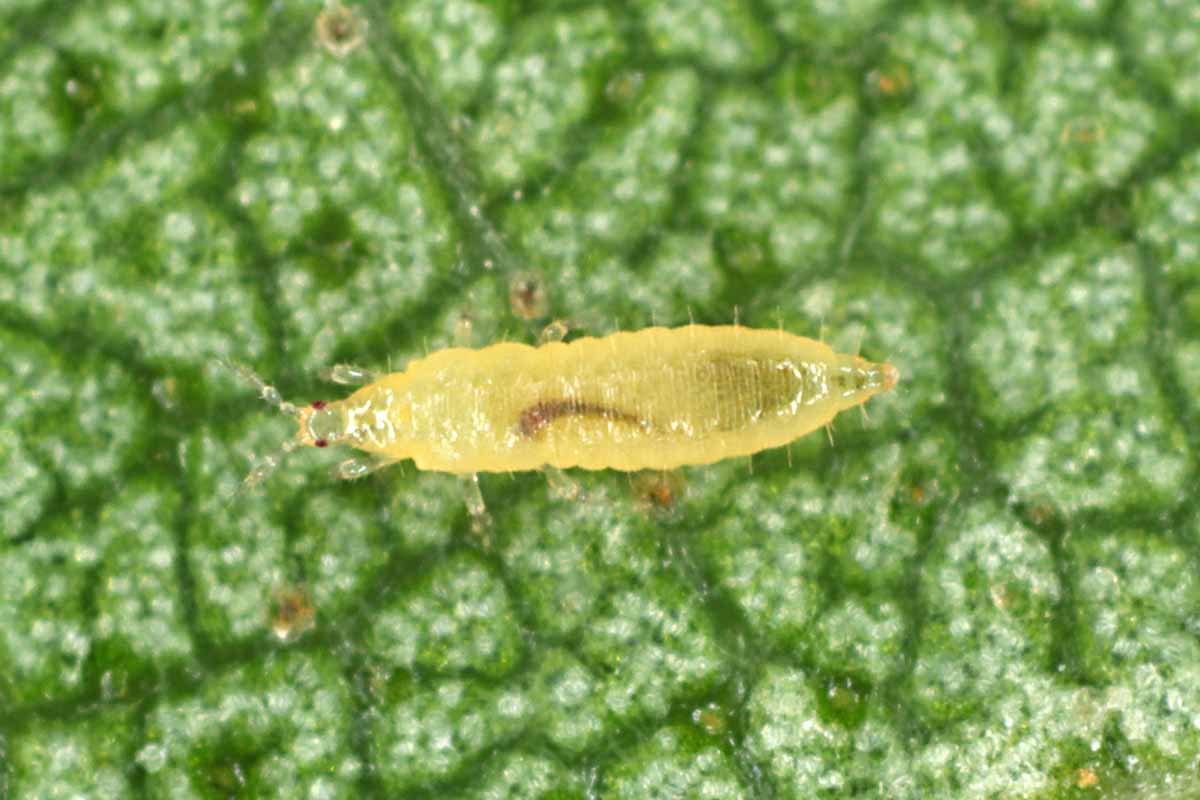
Extracting vital fluids from leaves, stems, and pitchers thrips leave their mark with flecked feeding damage, stippling, stunted growth, and even leaf drop.
Accompanying the damage is dark, excreted frass, which comes off as quite crass.
Thrips are difficult to control, as their damage can manifest after the pests leave. Yellow sticky traps can simultaneously monitor for and catch thrips.
Either way, prune away any damaged structures.
Tips for dealing with thrips can be found here.
10. Whiteflies
Belonging to the Aleyrodidae family, whiteflies can be a tough foe to tackle.
These pests look like small flies with a yellowish body and white wings, all of which is covered by a white mealy wax.
Laying their eggs on leaf undersides, whiteflies go through four nymphal stages, or instars, before reaching winged maturity.
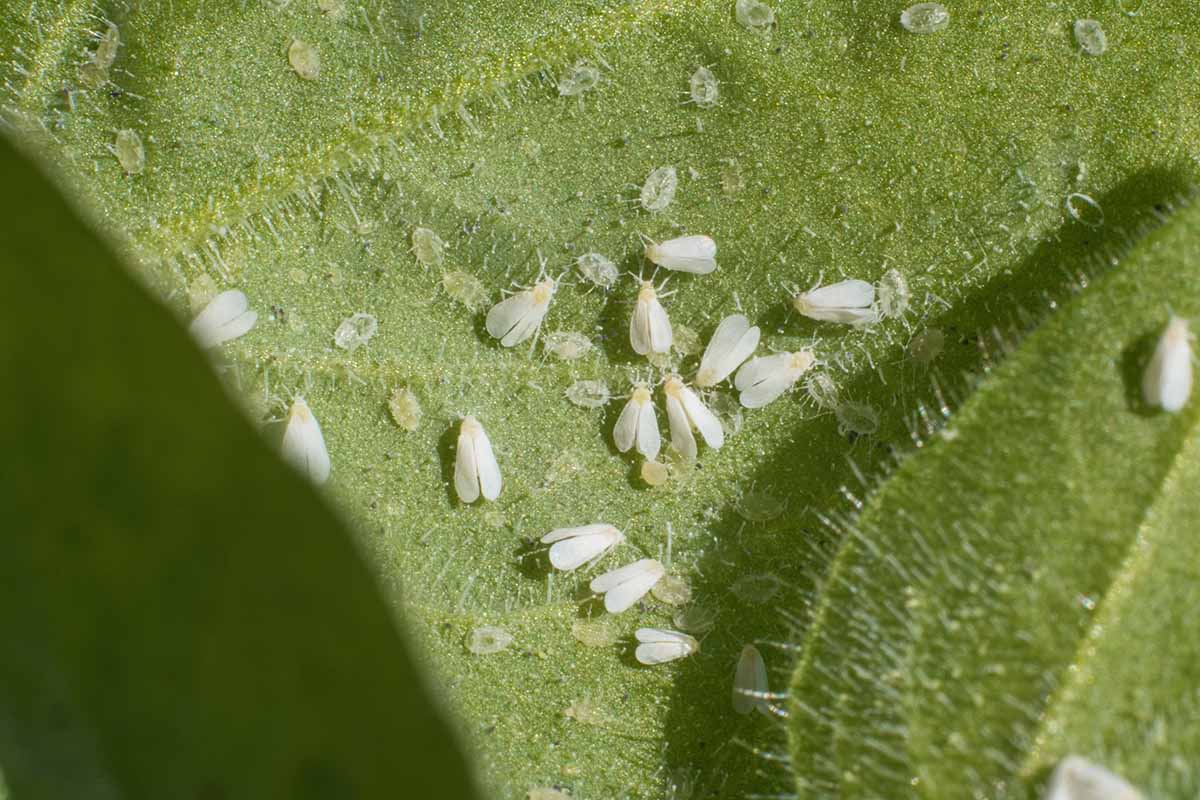
As they suck plant juices from leaves and pitchers – sensing a vampiric theme here? – whiteflies excrete the excess fluid as sooty-mold-forming honeydew, which is even grosser than it sounds.
Large amounts of feeding from big populations can leave your specimens chlorotic and desiccated, with dropped leaves and visible feeding damage.
Yellow sticky traps can do to whiteflies what they do to thrips, both indoors and outside. If a specimen is riddled with large amounts of immobile juvenile whiteflies, remove and destroy it.
A dose of whitefly wisdom can be found in our guide here.
11. Worms
The slimy, squirmy, and bait-able invertebrates known as earthworms don’t directly attack pitcher plants, but they can still be harmful to specimens growing outdoors.
When earthworms move through soil, they eat and excrete organic matter, which enriches the soil’s nutritional content and fertility. This is fantastic for most plants, but not so much for carnivorous ones.
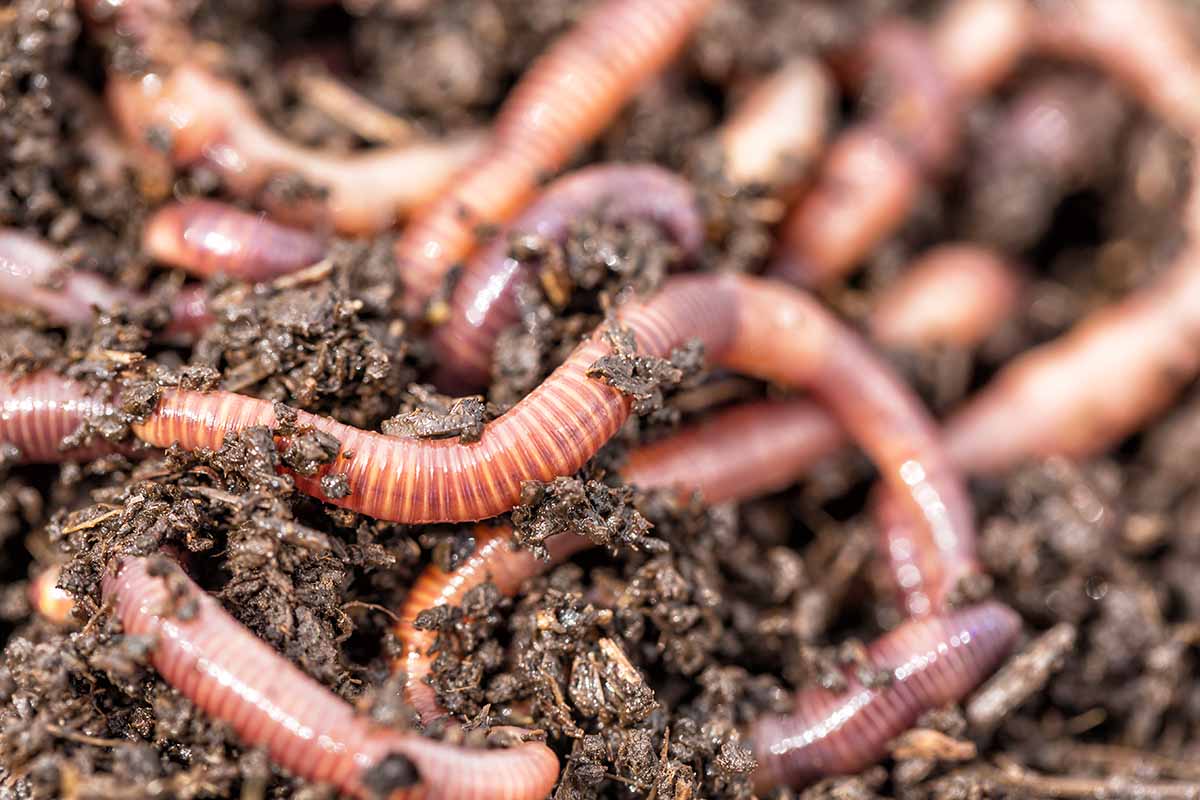
This ample nutrition that would nourish most flora can actually over-nourish pitcher plants, which could end up burning them, or even killing them outright.
So be sure to provide lean soil for your specimens to grow in and make sure to save your amendments of humus for the soils of your other plants.
If the presence of worms is starting to become a problem for your pitcher plants, you might have to pot up your specimens into a more appropriate growing medium, sans worms.
Keep Abreast of Pitcher Plant Pests
Knowledge is power, and know-how on pitcher plant pests is quite powerful.

I mean, you’ll be able to keep your specimens looking fly while catching flies. If that isn’t power, I don’t know what is.
Still have questions? Any pests I left out, or otherwise didn’t touch on enough? Be sure to visit the comments section below!
Want to learn more about pitcher plant cultivation? These guides are sure to hit the spot:

